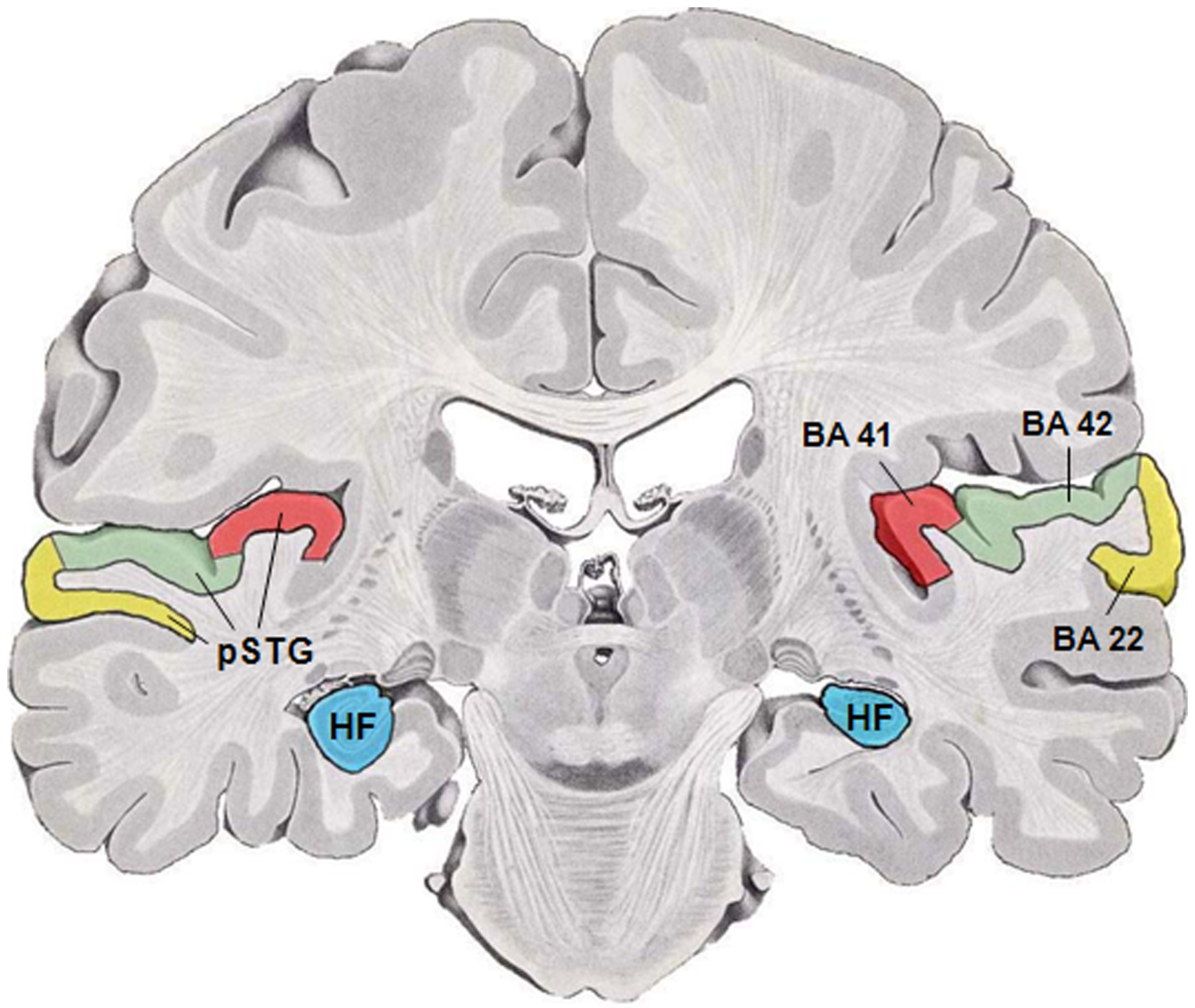Linguistic structures
Language is a complex process involving countless areas and functions of the brain. Speaking and understanding speech work simultaneously, together, and for each other in large parts of the listening and speaking process. Speech cannot function without hearing or auditory understanding.
Content
Language comprehension
Hearing has the role of receiving auditory information from the environment. Sound waves that reach the ear are converted into electrical impulses. These are then transmitted via nerve pathways to different areas of the cerebral cortex, which together form the auditory centre.
Traditionally, the Wernicke centre in the brain has been considered the centre for understanding speech. It is located behind the temple on the dominant side - for example, on the left side in right-handed people. Precise new neuroscience imaging techniques are providing increasingly precise information about the highly complex structure of our brains. Several areas were found to combine to form the auditory centre: in addition to the Wernicke centre, the auditory cortex is also involved.

The auditory cortex is divided into primary and secondary cortex. It is located in the left and right hemispheres of the brain, on the cerebral cortex, and is barely larger than a square centimetre each. Auditory information is thought to be processed in the left side. The area on the right side is more responsible for processing music, and the one on the left for speech. The left auditory cortex also appears to be responsible for our ability to filter relevant and irrelevant information. Both fields are constantly changing.
Conscious recognition of information occurs in the primary auditory cortex. The secondary auditory cortex is responsible for the interpretation and recognition of auditory impressions. Also located here is Wernicke's centre, the sensory centre of language, which is responsible for understanding spoken and written language.
A certain part of the brainstem is also part of the essential components of auditory information processing. Nerve pathways leading to areas of the auditory cortex branch off from them. It's also home to the auditory reflex centre, which triggers motor and visual reflexes to acoustic impulses for example, startling at an unexpectedly loud noise.
Speaking
The ability to form, pronounce and write words and sentences is called language production. It all starts with conceptualization (planning), which is really just about content.
This is followed by execution, formulation. This requires grammar as well as metrically and phonologically structured word forms. They are encoded in motor work instructions and directed to the articulatory organs (larynx, tongue, lips, lower jaw and involved muscles). These processes occur partly simultaneously, partly one after the other, but also partly overlapping. Therefore, speech is one of the most complex cognitive functions.
The motor cortex is located in the frontal lobe, which is under the frontal bone. Also here is the motor centre of speech (Broca's area). Areas in the motor cortex also control the muscles of the face, tongue or lips.
The auditory cortex is also involved in speech production. In the conceptualization phase, it is responsible for, among others, articulation, grammar and vocabulary.
The speech understanding and speech production systems are closely related and activate each other. This makes possible an inner control of the shape of the sound and the movement of speech execution.
What does this mean for my teaching practice?
The development of speech production requires a properly developed auditory competence. In this sense, both areas should always be considered when promoting or addressing deficits.
Reflection question
To what extent can the language competence of my class be improved by consciously working on auditory perception?
Quiz
1) Broca's area is located
A) in the frontal lobe
B) in the temporal lobe
C) in the partietal lobe
2) Which part of the brain has the most neurons?
A) motor speech centre
B) sensory speech centre